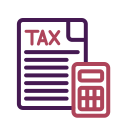Mastering Self-Employment Tax Planning in Canada
Chosen theme: Self-Employment Tax Planning in Canada. Welcome to a practical, friendly hub where Canadian freelancers, consultants, and creators learn to keep more of what they earn—without stress. Grab a coffee, subscribe for weekly tips, and let’s make taxes feel manageable.

Your Self-Employed Tax Landscape at a Glance
As a sole proprietor, you report business income on your T1 return using Form T2125, detailing revenue, eligible expenses, and net profit. Careful categorization matters, because it shapes deductions, credits, and the story your numbers tell the CRA.
Your Self-Employed Tax Landscape at a Glance
Self-employed individuals have until June 15 to file, but any balance is due by April 30, so plan cash flow early. If your tax is consistently owing, expect quarterly instalments—set reminders and automate transfers to stay calm.
Your Self-Employed Tax Landscape at a Glance
Maya, a Calgary photographer, saved thousands by tracking mileage, supplies, and subscriptions from day one. Her secret was consistency: a monthly checklist, a separate business account, and a habit of reviewing numbers before each quarter ended.
Deductions That Protect Your Cash Flow
01
Claim a home office only for space used to earn income, typically by square footage or reasonable use. Include a fair share of utilities, rent, or property taxes. Document calculations annually so you can explain them with confidence if asked.
02
Keep a mileage log that notes date, destination, purpose, and kilometres. Track fuel, insurance, maintenance, and parking separately from personal trips. Consider capital cost allowance for your vehicle, and never round estimates—precision is your best audit-proof friend.
03
Legal and accounting fees, domain renewals, software subscriptions, banking charges, and professional dues add up. Business insurance premiums are also common. Save receipts digitally, categorize them monthly, and avoid panic when tax time arrives by staying organized year-round.
When to register and when to wait
Most self-employed Canadians must register for GST/HST once they exceed the $30,000 small supplier threshold in four consecutive calendar quarters. You can register earlier to claim input credits, but weigh the admin cost against near-term cash flow benefits.
Invoicing, ITCs, and cash flow
Charge the correct rate for the customer’s province, collect the tax, and track Input Tax Credits on eligible expenses. Consider the Quick Method if you have modest input costs—it can simplify remittances and sometimes improve your cash flow margins.
Quebec and digital services nuances
If you operate in Quebec, QST often requires a separate registration with Revenu Québec. Selling digital services across provinces can trigger different rules, so verify your obligations early and keep a checklist that you review each quarter without fail.

Planning for CPP as a self-employed Canadian
Unlike employees, self-employed Canadians pay both the employer and employee portions of Canada Pension Plan contributions on net self-employment income. Build this into your pricing and monthly set-asides so retirement planning and tax obligations stay comfortably on track.
Quarterly tax instalments without panic
If you frequently owe at year-end, CRA may require quarterly instalments. Estimate conservatively, transfer to a dedicated tax account, and automate payments. Treat instalments like essential overhead, not surprises, and your future self will thank you loudly.
Should you opt into EI special benefits?
Self-employed individuals can voluntarily register for Employment Insurance special benefits, such as parental or sickness coverage. Consider stability needs, premiums, and eligibility waiting periods. Share your experience in the comments to help others weigh the trade-offs more confidently.

This is the heading
Lorem ipsum dolor sit amet, consectetur adipiscing elit. Ut elit tellus, luctus nec ullamcorper mattis, pulvinar dapibus leo.

This is the heading
Lorem ipsum dolor sit amet, consectetur adipiscing elit. Ut elit tellus, luctus nec ullamcorper mattis, pulvinar dapibus leo.

